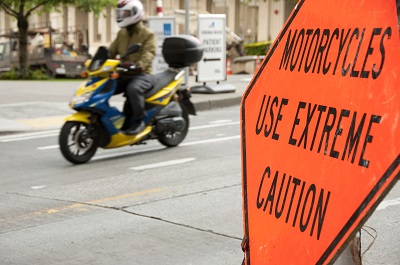 When spring is in the air, motorcycles are everywhere. Do you long for the freedom that comes with riding on the open road? Then it's critical to respect your machine and improve your skills throughout your lifetime.
When spring is in the air, motorcycles are everywhere. Do you long for the freedom that comes with riding on the open road? Then it's critical to respect your machine and improve your skills throughout your lifetime.
But that's only half the story. Motorists interested only in four-wheeled vehicles still have a major responsibility in keeping motorcyclists safe on the road.
In recognition of National Motorcycle Safety Awareness Month in May, the National Safety Council reminds riders – and drivers – to do their part.
In 2017, 5,172 motorcycle riders and passengers died in crashes. Fatalities among motorcycle riders and passengers have more than doubled in number since 1997.
 The vast majority of vehicles on the road are not motorcycles. They're cars and vans and trucks. It's quite possible that as a driver you rarely think about motorcycles.
The vast majority of vehicles on the road are not motorcycles. They're cars and vans and trucks. It's quite possible that as a driver you rarely think about motorcycles.
This is a problem.
"When motorcycles and other vehicles collide, it is usually the other (non-motorcycle) driver who violates the motorcyclist's right of way," according to an issue statement from NHTSA. "There is a continuing need to help other motorists 'think' motorcycles and to educate motorcyclists to be aware of this problem."
Why do drivers often violate motorcyclists' right of way?
Driver education programs should emphasize these issues – especially in programs for mature drivers who may have diminished abilities.
Riders 50 and older made up 36% of all motorcycle fatalities in 2017, according to the Insurance Institute for Highway Safety. So-called "re-entry riders," who rode in their 20s and decided to take it up again in their late 40s to 60s face additional challenges today: more traffic, more powerful bikes, more distracted drivers and diminished physical skills.
If you're going to ride a motorcycle, it's important to commit to a lifetime of learning new skills and brushing up on the old ones.
Read about Baby Boomers and motorcycle safety concerns.
A helmet is the most important equipment a biker can use. In 2017, 1,908 motorcyclists who died were not wearing a helmet. Helmets are estimated to be 37% effective in preventing fatal injuries.
Not every state has a helmet law, but even if yours doesn't, wear one anyway. A motorcycle crash is a "violent event." More than 80% of all reported motorcycle crashes result in injury or death, according to NHTSA. In addition to wearing a helmet:
There are no items in your cart